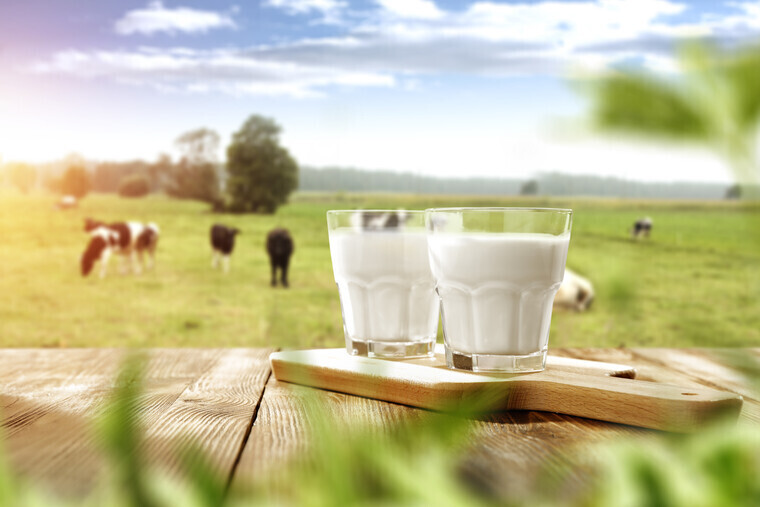Milk volumes have been tracking over 4% down in recent weeks according to the official production figures, and while the gap will close due to the time of year there is already significant concern among some processors for volumes later in the year.
In normal times milk volumes are closely related to the cost of feed via the milk price:feed price ratio. A ratio of 1.2:1 is conventionally viewed as being the economic threshold that is required to stimulate farmers to feed more in order to increase milk output. With current compound feed costs in the high £300/t range and heading over £400/t the ‘incentive’ milk price needs to be between 46 and 48p in order to hit that threshold.
However, history also shows that in exceptional times a ratio of 1.3:1 is required to turn volumes around. For that to happen the milk price needs to be over 50p, says Kite’s managing partner John Allen.
“Aside from feed, fertiliser prices and availability this grazing season will also be a key factor, as it is likely that farmers will cut back on fertiliser use, despite the false economy of doing so. This will potentially mean that forage quantity and quality will be compromised for the winter as big bulky forage cuts will do little to stimulate milk volumes,” explains John.
“Lower forage volumes and higher feed prices will mean farmers will almost certainly reduce their cow numbers – especially as cull cow prices are generally high. To put the fertiliser price in context between January 2010 and July 2021 (prior to the surge in cost inflation) it took an average of 1,000 litres to pay for a tonne of fertiliser. Between August 2021 and February 2022 it took 1,800 litres to pay for a tonne and currently it’s over 2,000 litres.”
Exactly the same scenario is also playing out on the continent, with volumes in the EU’s biggest milk producers Germany and France being around 2% down on last year. The projections are that there will be no increase in volumes until Q4 at the earliest, and that would depend on an easing of the cost situation.
“In the UK there are seven non-aligned processors and two retailers paying 40p, or more, for May and there is no doubt all of them are going to have to pay that and more before long,” says John. “But if processors, their customers, Government or policy makers think this is enough to stabilise or even increase milk supply then they are deluding themselves, it won’t. A 40p milk price is basically keeping pace with the rising cost of milk production. Another 5p is required to improve morale, another 10p is needed to cross the :1.3 MP:FP ratio and turnaround milk volumes.
“And if they all think they will be able to get their milk or dairy products from the EU (or further afield) then they are doubly-deluded,” he adds. “It is far more likely that EU companies will come to the UK looking for milk and we have already seen evidence of that with Arla’s announcement that it has successfully run trials concentrating our milk here and exporting it to the continent. Global milk prices and shipping costs also make it uneconomic to import from further afield.
“The message is that despite milk prices crossing the 40p threshold for the first time, the rise is not enough. Farmers are only covering their costs and are not profiteering, another 10p is required to reverse the decline in milk volumes,” John concludes.




